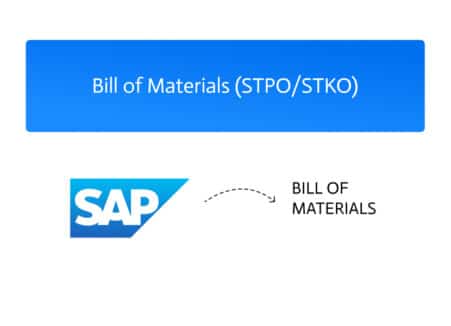

Salesforce Outlook Integration: Track Communication Easily
In today’s business world, efficiency drives success. Companies of all sizes depend on smooth workflows to manage customer relationships, internal operations, and communications. One of the best ways to enhance workflows is by integrating key systems. For businesses using Salesforce, a valuable integration is with Microsoft Outlook.
Salesforce Outlook Integration connects Salesforce, the leading customer relationship management (CRM) platform, with Microsoft Outlook, a widely used email and calendar application. This integration ensures synchronization of emails, contacts, and calendar events between the two platforms. By doing so, it allows users to track customer communications and manage their schedules without switching between apps. Consequently, it simplifies workflows, boosts efficiency, and enhances collaboration, making it an essential tool for businesses.
What is Salesforce Outlook Integration?
Salesforce Outlook Integration allows users to synchronize emails, tasks, contacts, and calendar events between Salesforce and Outlook. This means users access customer information on both platforms without needing to toggle between them. For example, an email received in Outlook automatically logs into Salesforce, ensuring that all customer interactions remain tracked and visible across the organization.
Key features include:
- Data synchronization: Emails, tasks, contacts, and calendar events are synchronized between both platforms.
- Real-time logging: Communications log into Salesforce immediately, helping maintain complete customer records.
- Task and event management: Users can manage tasks and events from either platform, ensuring they stay on top of schedules and deadlines.
Salesforce Outlook Integration is especially helpful for businesses that rely on email communications. It ensures all relevant customer data is accessible, current, and organized.
Why Salesforce Outlook Integration is Essential for Your Business
Integrating Salesforce with Outlook provides several key benefits. These advantages make it an indispensable tool for businesses looking to improve productivity, collaboration, and decision-making.
- Increased Productivity: By automating manual data entry, Salesforce Outlook Integration saves time. With real-time synchronization, users can create or update records directly from Outlook, reducing the need to switch between platforms.
- Enhanced Accuracy: Automation minimizes human error. By automatically syncing customer interactions, the integration ensures that data is always accurate and up to date.
- Improved Collaboration: Synchronizing data across platforms makes collaboration easier. For example, a sales rep can easily see communications logged by customer support, improving teamwork and ensuring everyone has access to the same information.
- Customization for Specific Needs: The integration can be customized to meet specific business requirements. Companies can automate workflows that align with their unique processes.
Real-Life Use Cases of Salesforce Outlook Integration
Salesforce Outlook Integration can transform various business functions. By automating processes, improving data accuracy, and enhancing team collaboration, this integration delivers significant benefits. Below are some detailed use cases that illustrate its impact across different departments:
1. Sales Team Productivity
Sales teams often spend many hours manually entering customer communication details into Salesforce. However, with Salesforce Outlook Integration, this process becomes automated. For example, when a sales rep receives an email in Outlook, the integration logs the email into the corresponding Salesforce record automatically. This not only saves time but also ensures that every communication is tracked.
Additionally, sales reps can schedule meetings in Outlook, and the event syncs with Salesforce. As a result, sales teams stay organized, tracking appointments, follow-ups, and deadlines. Automating these tasks allows sales reps to focus on nurturing leads and closing deals rather than managing administrative tasks.
2. Customer Support Efficiency
Customer support teams must respond to queries quickly to maintain customer satisfaction. Salesforce Outlook Integration allows support agents to log emails from customers directly into Salesforce as support cases. This setup streamlines customer issue management by ensuring all communication history is stored in one place.
For example, when a customer emails a support query, the email logs into Salesforce as a case. Support agents can then track the entire email exchange and respond to customer issues from Outlook. Salesforce updates the status of the case in real-time. This ensures that support agents always have access to the latest information, enabling them to resolve issues faster.
Customer support managers can also track case progress easily, ensuring that no issues are overlooked. By integrating Outlook with Salesforce, teams can streamline case management and respond to customer needs more efficiently.
3. Marketing and Lead Nurturing
Marketing teams can benefit greatly from Salesforce Outlook Integration by managing leads more effectively. For instance, when running an email campaign, the team can track prospect engagement automatically in Salesforce. Every email interaction, including opens and clicks, logs into Salesforce, providing valuable insights into campaign effectiveness.
The integration allows marketing teams to personalize follow-up strategies based on engagement data. Additionally, leads can be automatically assigned to the sales team for follow-up based on how they interact with the campaign. This ensures a smooth handoff between marketing and sales, improving the likelihood of converting leads into customers.
4. HR and Employee Onboarding
For HR teams that use Salesforce to manage employee data, integrating with Outlook can streamline the onboarding process. When a new employee is added to Salesforce, the integration can schedule onboarding meetings, assign tasks, and ensure key documents are sent to the new hire.
For example, once a new hire’s information is entered into Salesforce, the integration can schedule a welcome meeting in Outlook, send an email with onboarding documents, and assign tasks to the IT department to set up accounts. This ensures that every step of the onboarding process is tracked and managed efficiently.
The integration also helps HR track employee performance by syncing calendar events and task completions, giving HR managers a clear view of employee progress.
Methods for Creating Salesforce Outlook Integration
There are several ways to implement Salesforce Outlook Integration, depending on your business needs and technical abilities. Here are three common methods:
1. Manual Integration
Manual integration uses Salesforce’s native tools to connect Salesforce with Outlook. This method is simple and works well for small businesses with basic integration needs. However, it lacks advanced automation features and requires users to manage data synchronization manually.
2. Integration Platform as a Service (iPaaS)
For businesses looking for a scalable and user-friendly solution, iPaaS is an excellent option. iPaaS platforms offer pre-built connectors for Salesforce and Outlook, enabling seamless automation without coding. They also offer real-time synchronization, essential for maintaining data accuracy across both systems.
One standout iPaaS solution is Noca AI, a no-code platform designed for business users. Noca AI uses natural language processing (NLP) to make integration easy, even for non-technical users. It provides real-time synchronization, automated workflows, and robust security features to keep Salesforce and Outlook data up-to-date and accurate.
3. Custom API Development
Custom API development is the best option for businesses with unique requirements or complex workflows. This method allows companies to build custom APIs to connect Salesforce and Outlook. While it offers full control over the integration, it requires significant technical expertise and is time-consuming and costly.
Overcoming Common Challenges in Salesforce Outlook Integration
While Salesforce Outlook Integration offers many benefits, it can present challenges, including compatibility issues, data synchronization errors, and security concerns.
- Compatibility Issues: Keeping both Salesforce and Outlook updated to the latest versions helps avoid compatibility problems.
- Data Synchronization Dilemmas: Regular audits of your sync settings ensure that the correct fields are synchronized between platforms.
- Security Concerns: Employ strong security measures, such as encrypted communication and multi-factor authentication, to protect sensitive data.
Conclusion: The Future of Salesforce Outlook Integration
Salesforce Outlook Integration is a powerful tool that can transform business operations. It improves workflow efficiency, enhances collaboration, and ensures data accuracy. Whether you choose manual integration, an iPaaS solution like Noca AI, or custom API development, integrating Salesforce with Outlook is a critical step toward optimizing business processes.
By leveraging automation, real-time synchronization, and customization, this Salesforce Integration helps businesses save time, reduce manual work, and improve decision-making. With the right integration strategy, your teams will have the tools they need to succeed in today’s competitive business landscape.
Frequently Asked Questions (FAQs)
1. How does Salesforce Outlook Integration improve productivity?
Salesforce Outlook Integration automates manual tasks, such as logging emails and syncing calendar events. This reduces the time spent on administrative work and allows users to focus on higher-value tasks.
2. Can non-technical users manage Salesforce Outlook Integration?
Yes, especially with solutions like Noca AI. Noca AI uses natural language processing and no-code tools, making it easy for non-technical users to set up and manage integrations.
3. What is the best method for complex integrations?
For most cases iPaaS is the best option. This method offers full control over how data is synchronized between Salesforce and Outlook but requires technical expertise.
4. How does this integration benefit customer support?
Customer support teams can log emails directly into Salesforce as support cases, ensuring that every interaction is tracked and managed efficiently. This enables faster response times and better issue resolution.
5. What security features are available with Salesforce Outlook Integration?
Salesforce Outlook Integration includes security features such as encryption, multi-factor authentication, and secure communication channels to protect sensitive customer data.


